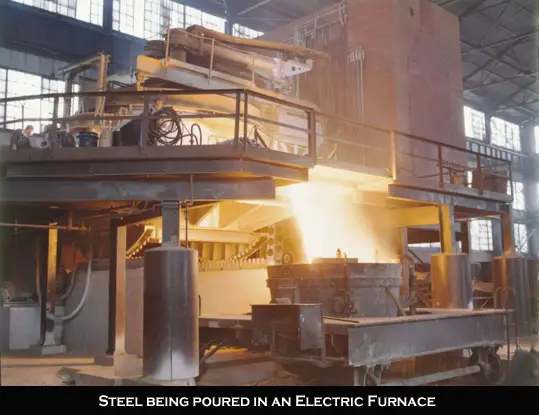Iron and Steel Emissions
Iron is believed to be the sixth most abundant element in the universe, and the fourth most abundant on earth. The concentration of iron in the various layers in the structure of the Earth ranges from high (probably greater than 80%, perhaps even a nearly pure iron crystal) at the inner core, to only 5% in the outer crust. Iron is second in abundance to aluminium among the metals and fourth in abundance in the crust. Iron is the most abundant element by mass of our entire planet, making up 35% of the mass of the Earth as a whole.
Steel is an alloy consisting mostly of iron, with a carbon content between 0.02% and 1.7 or 2.04% by weight (C:1000–10,8.67Fe), depending on grade. Carbon is the most cost-effective alloying material for iron, but various other alloying elements are used such as manganese and tungsten. iron and steel emissions

• The iron and steel industry accounts for about 19% of final energy use and about a quarter of direct CO2 emissions from the industry sector. The CO2 relevance is high due to a large share of coal in the energy mix.
• The iron and steel industry has achieved significant efficiency improvements in the past twenty-five years. Increased recycling and higher efficiency of energy and materials use have played an important role in this positive development.
• Iron and steel has a complex industrial structure, but only a limited number of processes are applied worldwide. A large share of the differences in energy intensities and CO2 emissions on a plant and country level are explained by variations in the quality of the resources that are used and the cost of energy.
• The efficiency of a plant in the iron and steel industry is closely linked to several elements including technology, plant size and quality of raw materials. This partly explains why the average efficiency of the iron and steel industries in China, India, Ukraine and the Russian Federation are lower than those in OECD countries. These four countries account for nearly half of global iron production and more than half of global CO2 emissions from iron and steel production. Outdated technologies such as open hearth furnaces are still in use in Ukraine and Russia. In India, new, but energy inefficient, technologies such as coal-based direct reduced iron production play an important role. These technologies can take advantage of the local low-quality resources and can be developed on a small scale, but they carry a heavy environmental burden. In China, low energy efficiency is mainly due to a high share of small-scale blast furnaces, limited or inefficient use of residual gases and low quality ore.
• Waste energy recovery in the iron and steel industry tends to be more prevalent in countries with high energy prices, where the waste heat is used for power generation. This includes technology options such as coke dry quenching (CDQ) and top-pressure turbines. CDQ also improves the coke quality, compared to conventional wet quenching technology.
• The identified primary energy savings potential is about 2.3 to 2.9 EJ per year through energy efficiency improvements, e.g. in blast furnace systems and use of best available technology. Other options, for which only qualitative data are available, and the complete recovery of used steel can raise the potential to about 5 EJ per year. The full range of CO2 emissions reductions is estimated to be 220 to 360 Mt CO2 per year. iron and steel emissions, iron and steel emissions.
* One exajoule (EJ) equals 1018 joules or 23.9 Mtoe.
Material is sourced from the International Energy Agency 2007, Tracking Industrial Energy Efficiency and CO2 Emissions.
